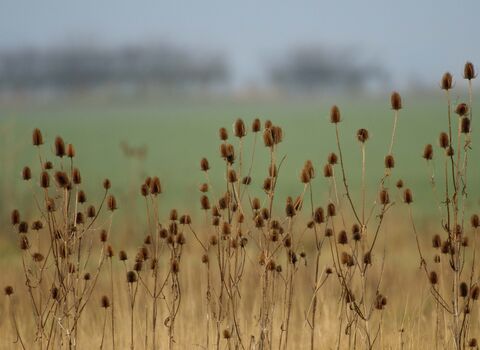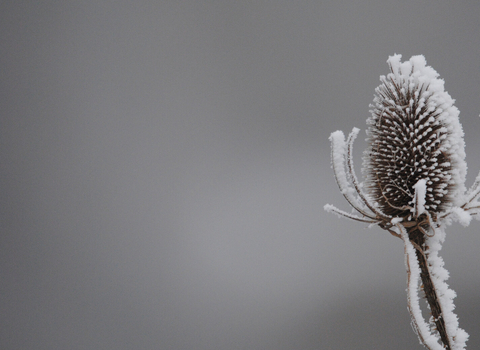
©Chris Gomersall/2020VISION

teasel by Amy Lewis
Teasel
The brown, oval, spiky seed heads of the teasel are a familiar sight in all kinds of habitats, from grassland to waste ground. They are visited by goldfinches and other birds, so make good garden plants.
